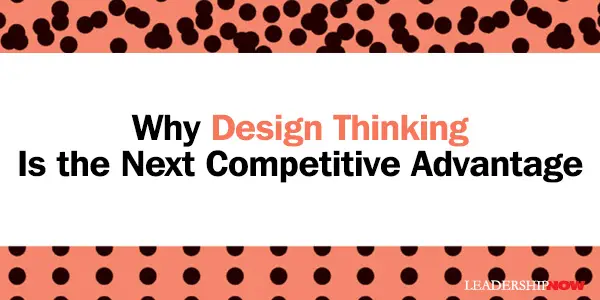 |
 |
06.09.10

Why Design Thinking Is the Next Competitive Advantage
WE live in a reliability-oriented world. And understandably so. We want predictable outcomes. We want things to keep working as they have always been—perfectly. Success. Repeat. Success. Repeat. But that thinking ultimately limits our growth and quite possibly harbors the seeds of our own destruction. It can be (very) valuable to a point, but it isn’t adaptable because by its very nature it has to leave something out of the equation. While reliable outcomes “reduce the risk of small variations in your business, they increase the risk of cataclysmic events that occur when the future no longer resembles the past” and the reliable is no longer relevant or useful. To remain relevant—to foster innovation—you need to incorporate into your thinking outcomes that are valid. That is outcomes that produce a desired result even if the solution employed can’t produce a consistent, predictable outcome. A perfectly valid solution is one that produces a result that is shown, through the passage of time, to have been correct. It is best to have a system that incorporates both—validity and reliability—into their approach. Balancing and managing the two approaches—analytical and intuitive—is what design thinking is all about. In The Design of Business, Roger Martin presents the knowledge funnel to show how knowledge moves. Each stage represents a simplification and ordering of knowledge. At the beginning is a mystery; a question. It is the observation of phenomena. Things we see but don’t yet understand.
The next stage is a heuristic, “a rule of thumb that helps to narrow the field of inquiry and work the mystery down to a manageable size.” Heuristics don’t guarantee success but do increase the probability of success. The last stage is the development of an algorithm. “An algorithm is an explicit, step-by-step procedure for solving a problem. Algorithms take the loose, unregimented heuristics—which take considerable thought and nuance to employ—and simplify, structuralize, and codify them to the degree that anyone with access to the algorithm can deploy it with more or less equal efficiency.” Martin uses the example of the development of McDonalds to illustrate how they proceeded down the knowledge funnel. In 1940 the McDonald brothers opened their first drive-in restaurant in San Bernardino, California. It did well, but by 1950 they began to lose business. Food was getting cold before it was delivered and families were put off by the hoards of teenagers they attracted. They had to develop a winning heuristic. They reduced and standardized the menu, and implemented their Speedee Service System. Ray Kroc saw an opportunity in it and bought them out. While the Speedee Service System was good, Kroc thought it left too much to chance. So he refined it and simplified it down to an exact science. The new system left nothing to chance and it was repeatable. “Kroc relentlessly stripped away uncertainty, ambiguity, and judgment from the processes that emerged from the McDonald brothers’ original insight. And by fine-tuning the formula, he powered McDonald’s from a modestly prosperous chain of burger restaurants to a scale previously undreamed-of.” The problem is getting stuck in any one stage. We tend to operate within a knowledge stage as opposed to moving across the knowledge stages. We need to explore and question, we need to exploit our solutions, even reducing them to a repeatable, efficient, formula where possible, but we need to be doing these things simultaneously. The vast majority of businesses follow a common path. The company is birthed through a creative act that converts a mystery to a heuristic through intuitive thinking. It then hones and refines that heuristic through increasingly pervasive analytical thinking and enters a long phase in which the administration of business dominates. And in due course, a competitor stares at the mystery that provided the spark for this company, comes up with a more powerful heuristic, and supplants the original business. McDonalds did well for decades, but eventually the heuristic (Americans want a quick, convenient, tasty meal) changed (Americans want a healthier menu). The solution for McDonalds is to go back and rethink the mystery and develop new rules of thumb to guide them. A trip back through the knowledge funnel. Avoiding this cycle is the job of the leader—a leader at any level. Martin writes, “CEOs must learn to think of themselves as the organization’s balancing force—the promoter of both exploitation and exploration; of both administration and invention.” This is design thinking. We need to develop our design thinking skills, analyze what’s working and why, and at the same time revisit the original mystery while considering entirely new mysteries. “The design thinker develops the capacity for observation, for seeing features that others may miss. The design thinker, in the words of novelist Saul Bellow, is ‘a first-class noticer.’” Always cycling through the knowledge funnel.
Posted by Michael McKinney at 12:28 PM
|
BUILD YOUR KNOWLEDGE
 

How to Do Your Start-Up Right STRAIGHT TALK FOR START-UPS 
Grow Your Leadership Skills NEW AND UPCOMING LEADERSHIP BOOKS 
Leadership Minute BITE-SIZE CONCEPTS YOU CAN CHEW ON 
Classic Leadership Books BOOKS TO READ BEFORE YOU LEAD |